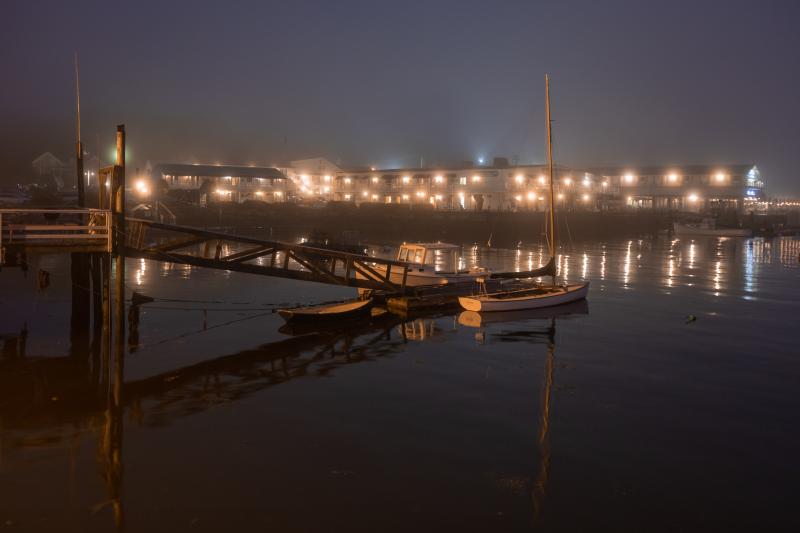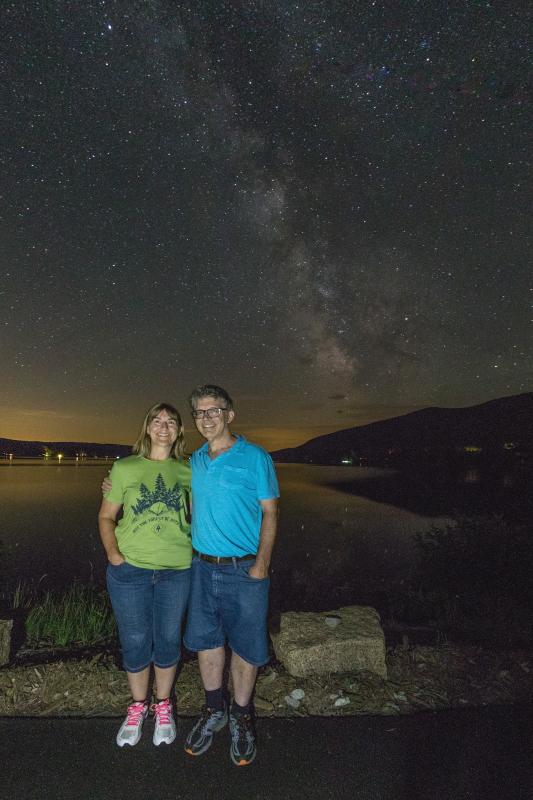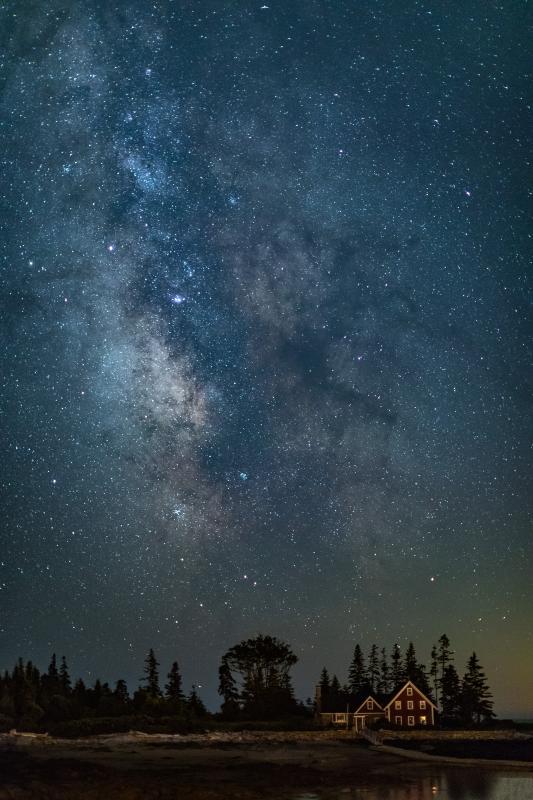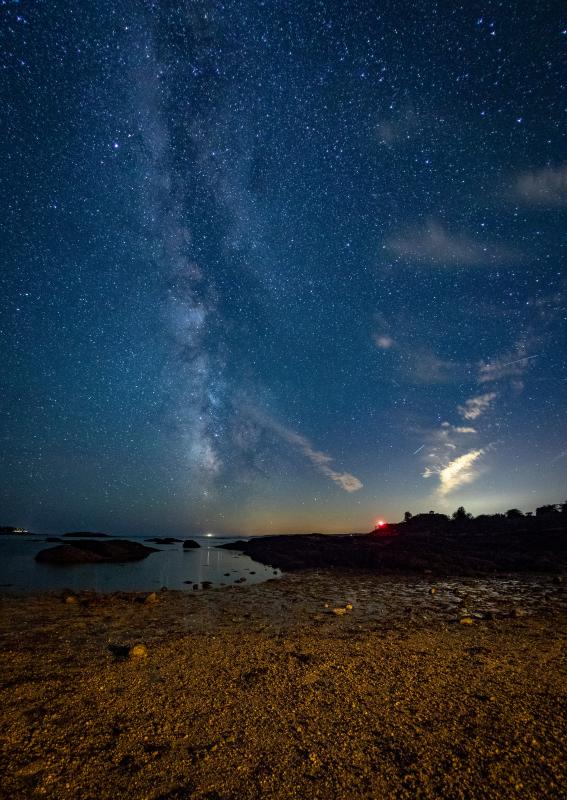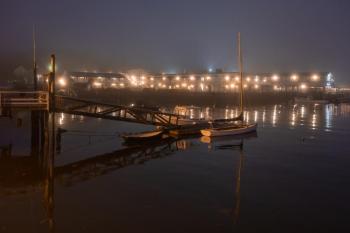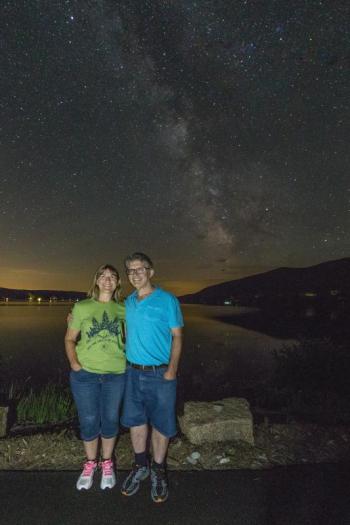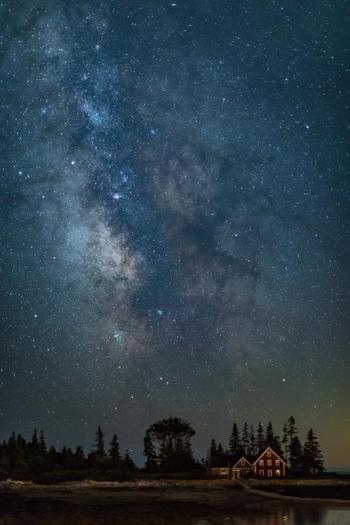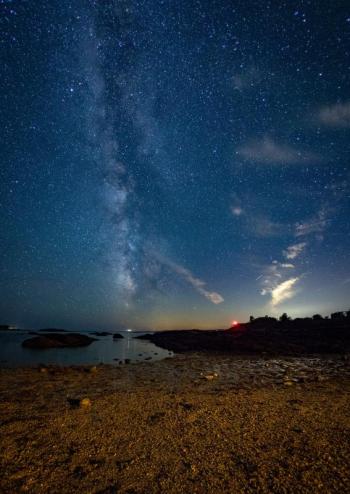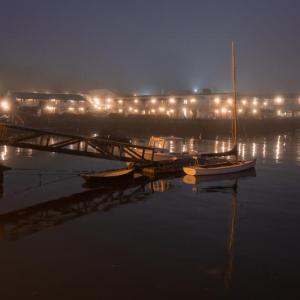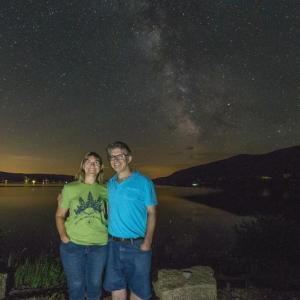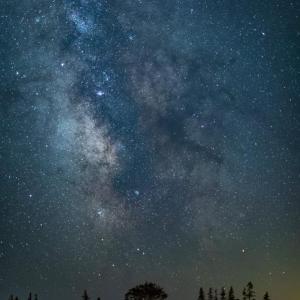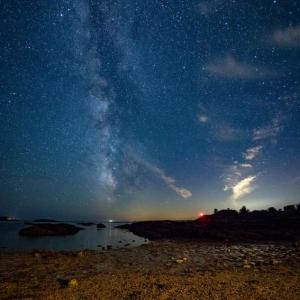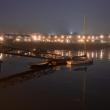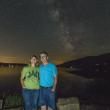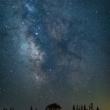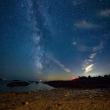Nighttime photography
Vacations are a time to get away, explore, see and do new things, make memories, relax and, of course, take pictures. There are countless tourist attractions, landmarks and other excursions that are ever popular and should not be missed. Yet many people tend to put their cameras away after the sun sets and that’s when you can sometimes make your most memorable vacation images.
Photographing at night sky can be very rewarding and all it takes is a clear night, a DSLR camera and a tripod to make images that you’ll want to share with your friends and family on social media. With just moonlight and or street lights you can make dramatic image captures that look like daytime but for the black sky. And what’s more when visiting popular places at night you’ll likely find parking to be easier, less crowded and you can skip the suntan lotion!
Exposure is all about collecting the right amount of light. Imagine filling a cup with a fire hose – it would take just a fraction of a second. Think of that water from the fire hose as being like bright sunlight – that’s why when we take pictures in the daytime we only expose for fractions of seconds. Light from the moon on the other hand is like a dripping faucet – you can still fill the cup but it will take longer to collect enough light to make a good exposure. The ISO setting on your camera is for light sensitivity – think of that as being the size of the cup you are filling. The higher the ISO the smaller the cup, so to speak, and therefore the less water, or light, you’ll need to collect to properly fill the frame. With higher ISO settings come more noise or grain in the photo so it is important to only choose highest necessary and not just use the maximum setting.
Some cameras have a general setting for shooting at night or in low light and you can get acceptable results in that mode.
So here is what you’ll need to get started.
A camera that can take long exposures of at least 15 seconds, a tripod and a flashlight. Some apps for camera phones will allow for long exposures - for the Android platform consider a free app called FV-5 that allows you to set the camera functions in your phone like you would a DSLR camera.
Putting your camera to manual mode will allow you to set the shutter speed to 20 seconds and the lens aperture to around f/5.6 or lower if your lens allows. The sensitivity or ISO will want to be set to between 3200 and 4000 for the low light levels you will be capturing. To minimize camera shake use the built in timer so when you press the shutter button the camera will have a chance to stabilize before taking the picture. Usually the 2 second timer is adequate. And experiment with the White Balance setting - try using Daylight for moonlit scenes and try Tungsten or Incandescent for scenes with stars or other lights.
It’s best to rehearse adjusting these controls on your camera in the daylight and know where all these settings are before you head out to take pictures in the dark.
If you find your images are coming out too dark try opening the lens aperture to a lower number like f/ 4 to f/ 2.8 if possible to let more light in. Alternately you can raise the ISO but just know with the higher sensitivity comes grain and other noise artifacts in the image. If your starting point makes for an image too light then try reducing the ISO until you get an acceptably exposed image.
A clear night is the best - you don’t want your gear to get wet and risk water damage.
To catch the Milky Way you will need a night where the moon is not very visible. There are any number of apps for smart phones that will help you to find the best location to capture the Milky Way and other celestial objects. One such App is called Photo Pills and is available for both Android and iPhones for a nominal one-time fee. That app will also help steer you to make your best shots of the sun and moon rises and sets.
Moonlight can wash out stars in the sky preventing you from making Milky Way shots but it can also bathe the landscape with a quality of light that can look like daylight. Try capturing scenes that you’d normally do in the daytime to make an image that is truly dramatic.
You can use a flashlight to paint light on nearby objects or diffuse the light through a white piece of tissue paper to cast a soft light onto people to make a truly unique night portrait of your family members while on vacation. You’ll only need to have the light on for a second or 2 at the start of the exposure then shut it off and make sure your subject doesn’t move for the rest of the exposure.
Fog can be wonderful at night where you can make soft glowing images of areas containing streetlights.
Some suggested places to make nighttime shots in the area are..
The footbridge from the east side of the harbor. On a foggy night the glow of the town can look very nice.
The wharf at Newagen is a good spot to photograph the Milky Way as well as make some images of the Cuckolds light station.
Grimes Cove in East Boothbay is a great spot to shoot star over the ocean with Ram Island in the scene.
So before you put your camera away at sunset try something that may be new to you and make some photo memories to share that are bound to be very unique indeed.
Nighttime family portraits
Family portraits can take on a whole new look at night. All it takes is a clear sky without the moon, a tripod, a DSLR camera capable of at least a 20-second exposure an LED flashlight and a shirt that is mostly neutral in color - like a gray sweatshirt - and some patience.
Position your subjects with the starry night and Milky Way behind them. - it can take a bit for your eyes to adjust to see the Milky Way. Set your camera lens to manual focus and use the flashlight to help focus and compose your subject in the frame. Set your camera to expose for 20 seconds at F/4 and at an ISO of 4000. Experiment with White Balance - Tungsten will make the sky bluer - Daylight will make it warmer toward an orange color.
When everything and everybody is in place open the shutter and cast a soft light onto your subjects for as little as 1 to 2 seconds then have your subjects stand still until the end of the exposure. This is where the gray sweatshirt is nice for the photographer to be wearing as the flashlight reflected off of that will provide the nice soft light onto your subjects for those short couple of seconds.
The stars are very dim so you need to collect light for the 20 seconds - because a flashlight is bright by comparison only a short amount of that light is needed to properly expose your subjects. Try using the self timer to give you a few seconds to position the flashlight before the exposure.
If you find the subject is too bright reduce the amount of time you have your flashlight on.
Expect to experiment with the technique - as they say practice makes perfect.
In the attached image my friends had to stand for 20 seconds and I just used a simple flashlight to cast the soft light onto them for a couple of seconds.
Mike Leonard is a night owl of sorts when it comes to photography. When he isn’t leading a photography cruise or other outing after sunset he can often be found collecting light of the Moon and stars. Contact him through his website www.phototourismbymike.com where you can see the photo activities he has scheduled as well as link to his social media accounts and to contact him.
Event Date
Address
United States

